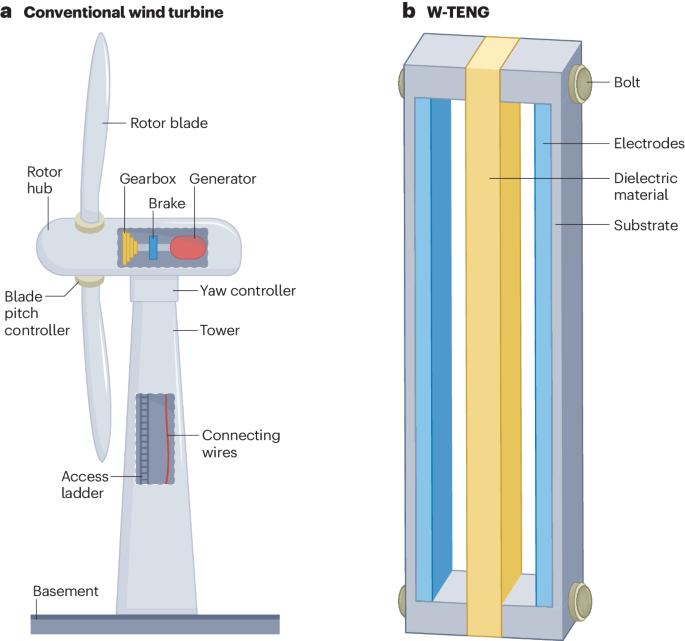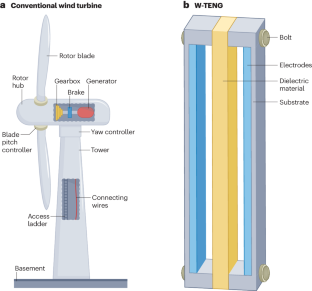Triboelectric nanogenerators for wind energy harvesting
引用次数: 0
Abstract
Researchers in different disciplines from all around the world are constantly working on the development of new technologies for harvesting energy from sustainable sources. Among the various alternatives, wind is one of the most abundant resources. Traditionally, wind energy has been harvested to produce electrical energy using various types of wind turbines, including onshore or offshore wind turbines, horizontal or vertical axis wind turbines and micro-wind turbines; or, less traditionally, using wind pumps, or windmills, on sailing boats, and through some sports activities (such as kiteboarding, windsurfing and kitesurfing). In this context, wind energy harvesting using triboelectric nanogenerators (TENGs) has unique characteristics able to challenge the existing wind energy harvesting technologies. Wind-driven TENGs are in fact characterized by simple structures, reduced size and weight, easy installation, flexibility and low-cost operation. Here, starting from a detailed comparison with conventional wind turbine systems, we introduce the technological advancement of wind-driven TENGs. Device structures, materials, fabrication processes and performance characteristics in terms of costs and applications are outlined. Open issues and challenges to be addressed towards the development and industrialization of commercial products are also presented. Wind-driven triboelectric nanogenerators have the potential to revolutionize wind energy harvesting technologies. This Review analyses developments, costs and challenges of wind-driven triboelectric nanogenerators and evaluates research directions towards industrial applications.


用于风能收集的三电纳米发电机
世界各地不同学科的研究人员一直致力于开发从可持续能源中获取能量的新技术。在各种替代能源中,风能是最丰富的资源之一。传统上,人们利用各种类型的风力涡轮机(包括陆上或海上风力涡轮机、水平或垂直轴风力涡轮机和微型风力涡轮机)收集风能来生产电能;或者,不那么传统的做法是,在帆船上利用风泵或风车,以及通过一些体育活动(如风筝冲浪、帆板冲浪和风筝冲浪)收集风能。在这种情况下,利用三电纳米发电机(TENGs)收集风能具有独特的特点,能够挑战现有的风能收集技术。事实上,风力驱动的 TENG 具有结构简单、尺寸和重量小、安装方便、灵活性强和运行成本低的特点。在此,我们从与传统风力涡轮机系统的详细比较入手,介绍风力驱动 TENG 的技术进步。概述了设备结构、材料、制造工艺以及成本和应用方面的性能特点。此外,还介绍了在商业产品的开发和产业化方面有待解决的问题和面临的挑战。
本文章由计算机程序翻译,如有差异,请以英文原文为准。
求助全文
约1分钟内获得全文
求助全文

 求助内容:
求助内容: 应助结果提醒方式:
应助结果提醒方式:


